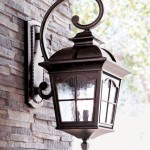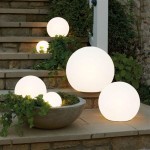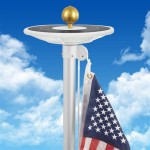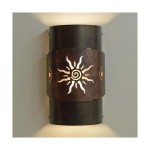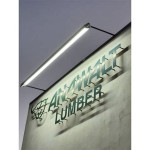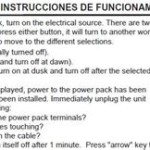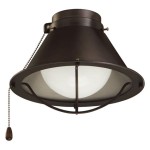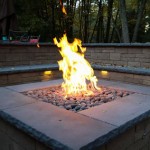How To Remove Mildew Stains From Outdoor Pillows
Outdoor pillows provide comfort and style to patios, decks, and gardens. However, constant exposure to moisture, humidity, and organic debris creates an ideal environment for mildew growth. Mildew manifests as unsightly stains and a musty odor, detracting from the aesthetic appeal and potentially causing allergic reactions. Addressing mildew stains promptly and effectively is crucial for maintaining the longevity and hygiene of outdoor pillows.
The process of removing mildew stains from outdoor pillows requires careful consideration of the fabric type and the severity of the staining. Various cleaning solutions and techniques are available, ranging from gentle household remedies to more potent commercial products. This article provides a comprehensive guide to safely and effectively remove mildew stains from outdoor pillows, ensuring their continued use and enjoyment.
Identifying Mildew and Preparing for Cleaning
Before commencing any cleaning procedure, it is essential to correctly identify the presence of mildew. Mildew typically appears as small, black, gray, or white spots or patches on the surface of the fabric. It often has a characteristic musty or earthy odor. Distinguishing mildew from dirt or other stains is important to select the appropriate cleaning method.
Once mildew is identified, preparations must be made to ensure a safe and effective cleaning process. This involves gathering the necessary supplies, including cleaning solutions, brushes, cloths, and protective gear. It is also advisable to work in a well-ventilated area, preferably outdoors, to minimize exposure to mold spores and cleaning chemicals. Protecting the surrounding surfaces is crucial to prevent accidental staining or damage.
The first step in the preparation process is to carefully inspect the outdoor pillow. Examine the fabric type, the extent of the mildew growth, and any care instructions provided by the manufacturer. These instructions often contain valuable information regarding suitable cleaning agents and methods. If the care label recommends professional cleaning, it may be the most prudent option, especially for delicate or expensive pillows.
After the inspection, prepare a workspace that is adequately ventilated and protected. Place the pillows on a clean, flat surface, such as a patio table or a covered area. Cover the ground or surrounding surfaces with drop cloths or plastic sheeting to prevent staining or damage from cleaning solutions. This precautionary measure will simplify the cleanup process and protect the environment.
Gather the necessary cleaning supplies. This includes a soft-bristled brush, a sponge or cleaning cloths, a bucket or container for mixing cleaning solutions, and appropriate cleaning agents. The choice of cleaning agent depends on the fabric type and the severity of the mildew stain. Common options include diluted bleach solutions, vinegar solutions, baking soda paste, and commercial mildew removers. Always test the chosen cleaning agent on an inconspicuous area of the pillow before applying it to the entire surface.
Personal protective equipment is essential to safeguard against potential health risks associated with mold spores and cleaning chemicals. Wear gloves to protect the skin from irritation and potential allergic reactions. A face mask or respirator can minimize the inhalation of mold spores and chemical fumes. Eye protection, such as goggles or safety glasses, is also recommended to prevent accidental splashes of cleaning solutions into the eyes.
Effective Cleaning Solutions and Techniques
Several cleaning solutions are effective in removing mildew stains from outdoor pillows. The choice of solution depends on the fabric type, the severity of the mildew growth, and personal preferences. It is always advisable to test the chosen solution on an inconspicuous area of the pillow before applying it to the entire surface to ensure it does not cause discoloration or damage.
A diluted bleach solution is a potent option for removing mildew stains, particularly on light-colored or white fabrics. Mix one part bleach with ten parts water in a well-ventilated area. Apply the solution to the affected area using a sponge or cloth, ensuring the fabric is thoroughly saturated. Allow the solution to sit for approximately 15-20 minutes, then rinse thoroughly with clean water. Bleach can be harsh on certain fabrics, so exercise caution and test the solution before widespread application. Furthermore, avoid using bleach on colored fabrics as it can cause fading.
Vinegar is a natural and effective alternative to bleach. Its acidic properties inhibit mildew growth and dissolve stains. Mix equal parts white vinegar and water in a spray bottle or bucket. Spray the solution onto the mildew-stained area or apply it using a sponge or cloth. Allow the solution to sit for approximately 30-60 minutes, then rinse thoroughly with clean water. The vinegar odor will dissipate as the pillow dries. Vinegar is generally safe for most fabrics but should still be tested on an inconspicuous area first.
Baking soda is another gentle and versatile cleaning agent. It can be used as a paste to absorb mildew stains and neutralize odors. Mix baking soda with water to form a thick paste. Apply the paste to the affected area and allow it to dry completely. Once dry, brush off the paste using a soft-bristled brush. This method is particularly effective for removing light mildew stains and freshening up outdoor pillows. Baking soda is generally safe for all fabric types.
Commercial mildew removers are available in various formulations, including sprays, liquids, and powders. These products are specifically designed to target and eliminate mildew stains. When using commercial mildew removers, carefully follow the manufacturer's instructions. Wear appropriate protective gear, such as gloves and a mask, and work in a well-ventilated area. Test the product on an inconspicuous area of the pillow before applying it to the entire surface to ensure it does not cause discoloration or damage.
After applying the chosen cleaning solution, scrub the affected area gently using a soft-bristled brush or sponge. Avoid using abrasive brushes or harsh scrubbing techniques, as they can damage the fabric. Pay particular attention to areas with heavy mildew growth. Rinse the treated area thoroughly with clean water to remove all traces of the cleaning solution. Ensure that no residue remains on the fabric, as it can attract dirt and promote further mildew growth.
Drying and Preventing Future Mildew Growth
Proper drying is crucial to prevent the recurrence of mildew and ensure the longevity of outdoor pillows. Avoid placing the pillows in direct sunlight, as it can cause fading and damage to the fabric. Instead, air-dry the pillows in a well-ventilated area, preferably outdoors or in a room with good airflow.
Before drying, gently squeeze out any excess water from the pillows. Avoid wringing the pillows, as it can damage the internal filling and cause the fabric to lose its shape. Place the pillows on a clean, dry surface or hang them on a clothesline to air-dry. Turn the pillows regularly to ensure even drying on all sides. This will prevent moisture from becoming trapped inside the pillow, which can lead to mildew growth.
To expedite the drying process, consider using a fan to circulate air around the pillows. This will help to evaporate moisture more quickly. Avoid using a clothes dryer, as the high heat can damage certain fabrics and cause the pillows to shrink or lose their shape. If using a dryer is unavoidable, use the lowest heat setting and check the pillows frequently to prevent overheating.
Preventing future mildew growth is essential for maintaining the cleanliness and hygiene of outdoor pillows. Regularly clean and inspect the pillows to identify and address any early signs of mildew. Promptly remove any dirt, debris, or spills from the surface of the pillows. Consider using a fabric protector spray to create a barrier against moisture and mildew growth. These sprays are available at most home improvement stores and can be applied according to the manufacturer's instructions. Before using, test on a hidden area.
Store outdoor pillows in a dry, well-ventilated area when not in use. This will help to prevent moisture buildup and mildew growth. If possible, store the pillows indoors during periods of heavy rain or high humidity. Consider using waterproof storage containers or pillow covers to protect the pillows from the elements. Periodically air out the pillows to prevent moisture from becoming trapped inside. Proper storage and regular maintenance are key to preventing future mildew growth and prolonging the lifespan of outdoor pillows.
By following these steps, one can remove mildew stains from outdoor pillows and prevent future growth, ensuring their continued use and enjoyment for years to come. Regular maintenance and proactive measures are essential for keeping outdoor pillows clean, fresh, and mildew-free.

How To Remove Mildew Stains From Outdoor Cushions

How To Remove Mildew Stains From Outdoor Cushions

How To Remove Mildew Stains From Outdoor Cushions

How To Remove Mildew From Outdoor Furniture Cushions

How To Remove Mildew Stains From Outdoor Cushions

Cleaning Mrs Hinch Fans Share How To Remove Mould From Outdoor Cushion Covers Express Co

How To Remove Mildew Stains From Outdoor Cushions

How To Clean And Renew Outdoor Furniture Stained Cushions Hometalk

How To Remove Mildew Stains From Outdoor Cushions

Wet Forget Outdoor Mildew Remover For Patio Furniture Life S Dirty Clean Easy
